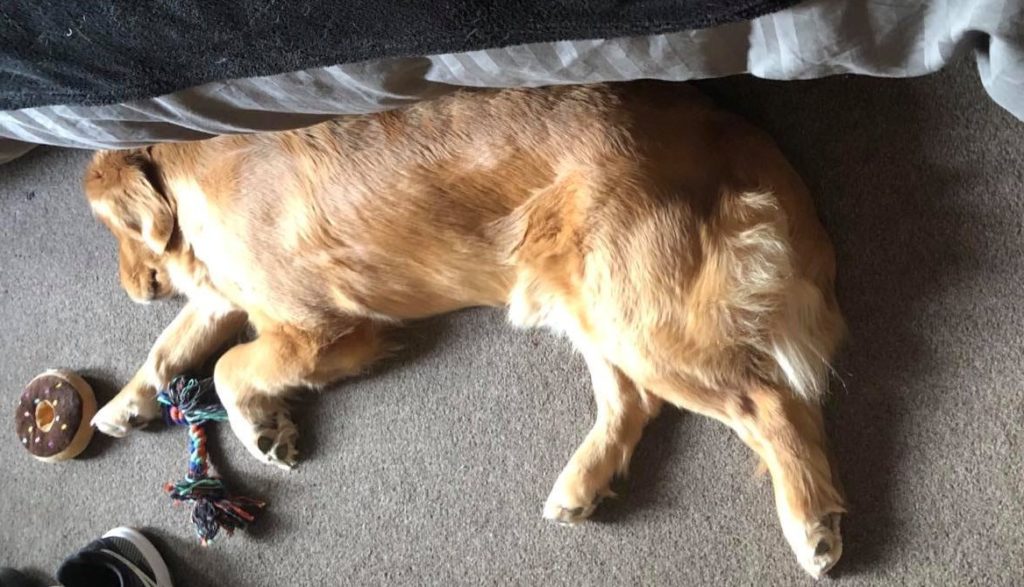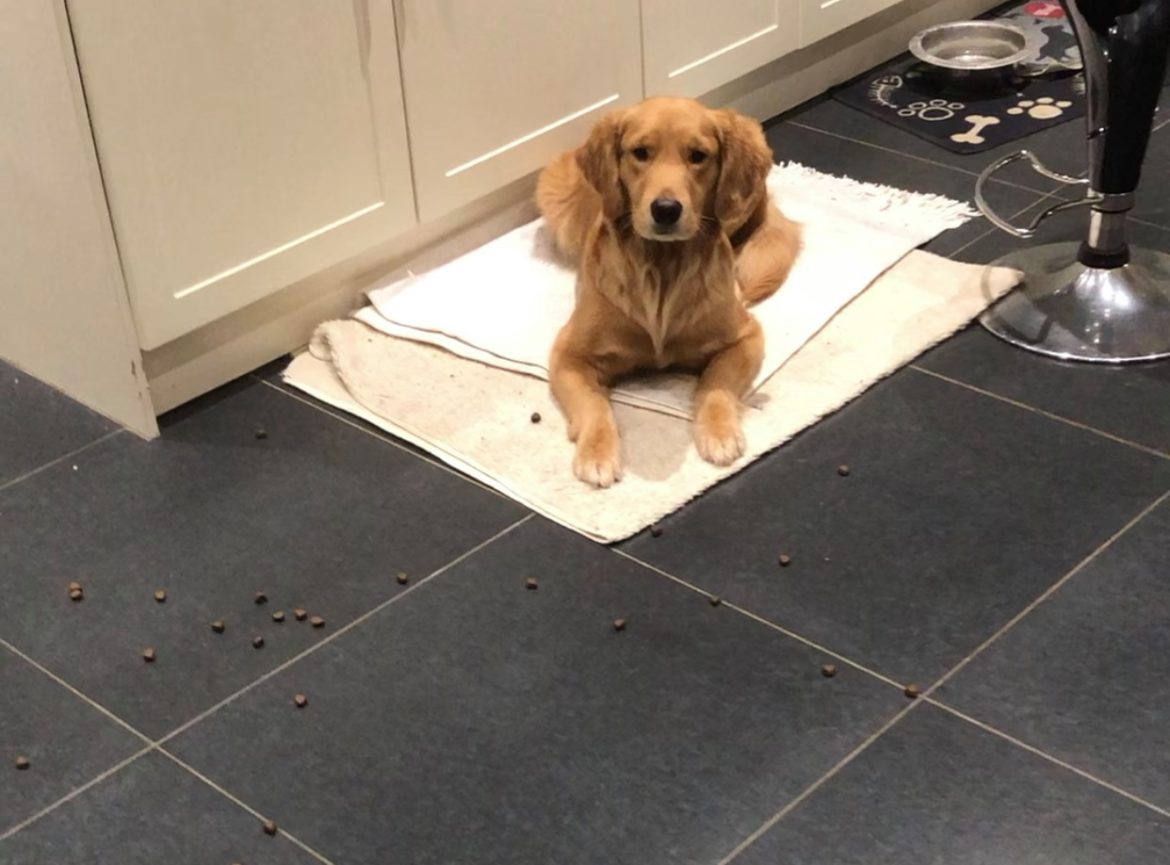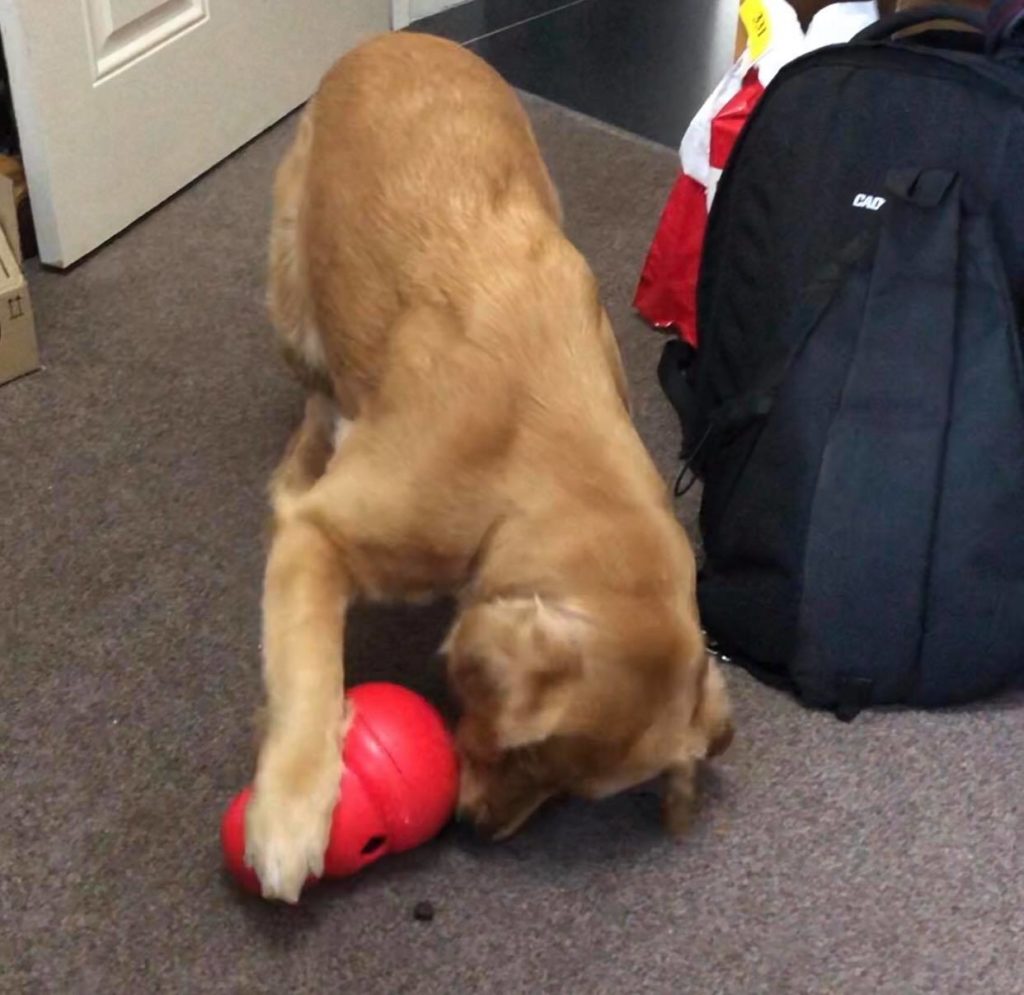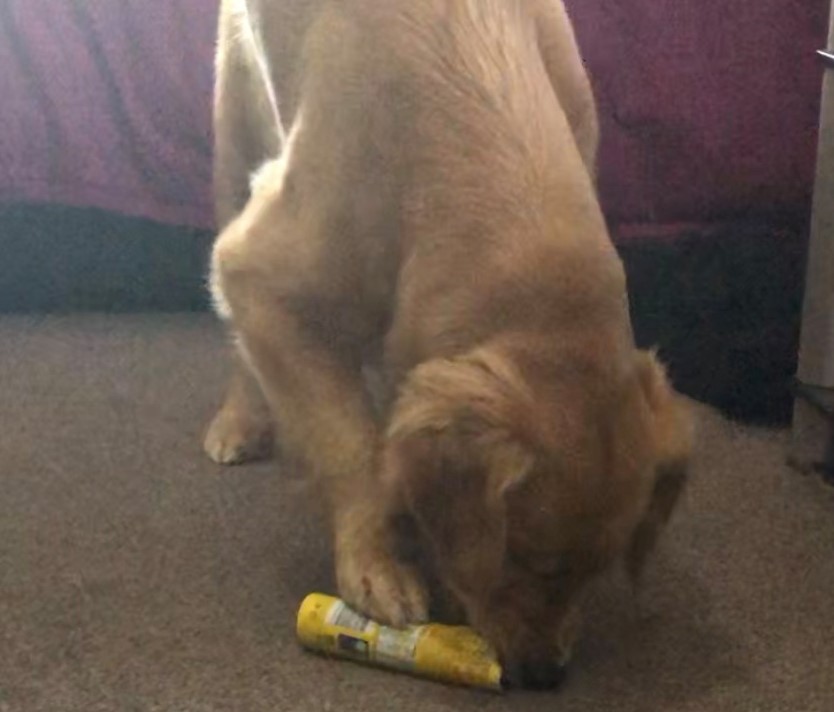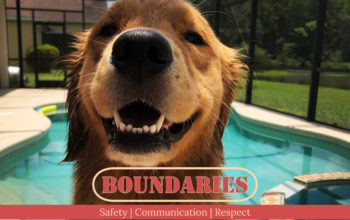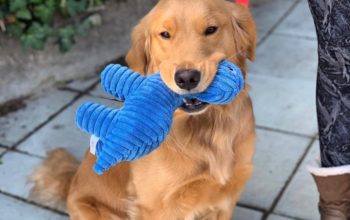Implementing Boundaries in Training and Enrichment Sessions
FOR A TRAINING SESSION TO GO SMOOTHLY AND FOR YOU AND YOUR DOG TO BE ON THE SAME WAVELENGTH, THERE NEEDS TO BE SOME STRUCTURE AND CLEAR COMMUNICATION. FIND OUT HOW TO MAXIMISE YOUR DOG’S TRAINING AND ENRICHMENT SESSIONS USING THESE BOUNDARIES
Author: Dory Adelie
In our owner training section we discussed the importance of setting up a productive training environment. Below I recap some key points of this.
Quick Recap:
- Keep training sessions short
- Create a focused environment by minimising distractions and interruptions
- Teach something new without any other distractions
- Teach brand new commands, actions, tricks and tasks one at a time so as not to confuse your dog
- Avoid excessively repeating commands
- Timing is key, especially when it comes to markers (words or clicker)
- Use the appropriate value of treat for the activity
Following on from that, we are now talking about some important cues that represent and communicate boundaries during your training sessions. The type of training where these are absolutely essential includes enrichment activities with food (e.g. scavenging, investigating and getting food from bags/boxes etc.). but the skills are useful in all training sessions and interactions for a productive working relationship. Enrichment activities like scavenging are fantastic at working the dog’s brain and nose, and are low impact, low cost, senior-friendly and all-weather ways of entertaining your dog. So you don’t want to have to write them off for fear of your dog starting to scavenge for food around the house 24/7 – we discuss how to avoid this situation.
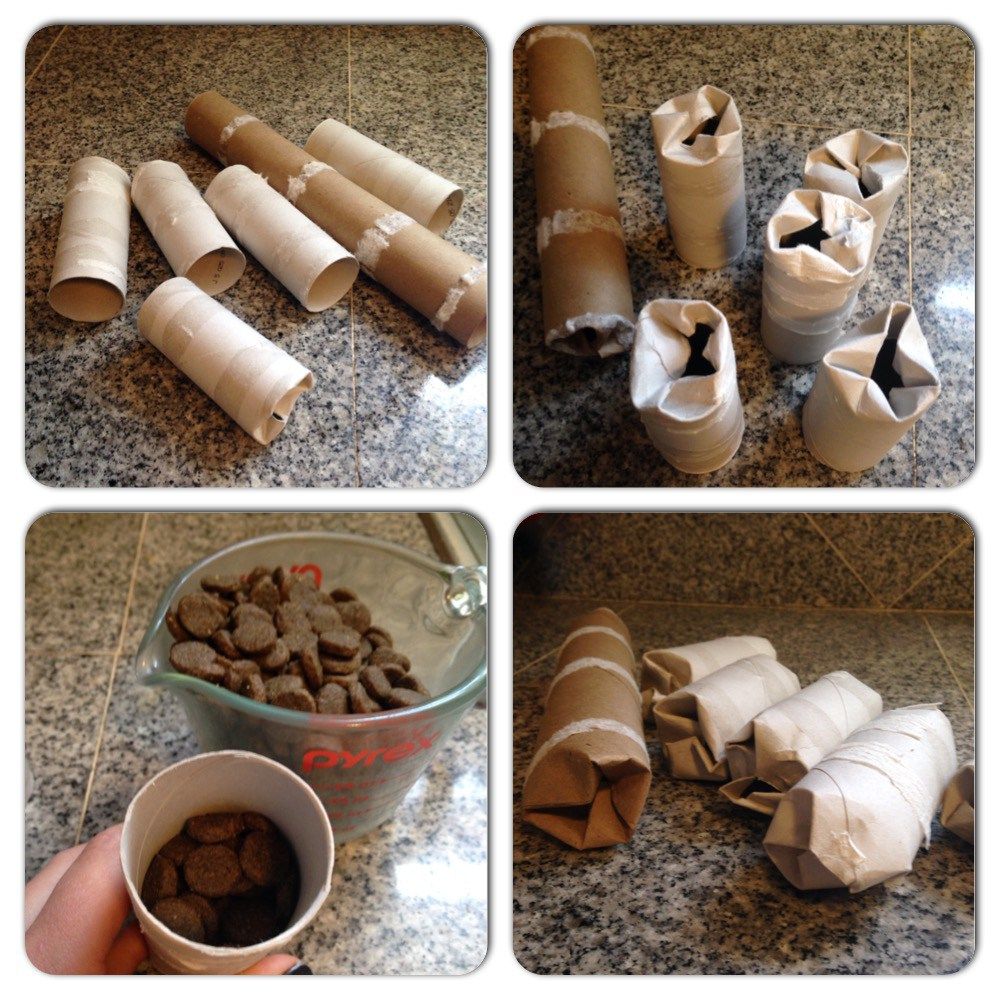
Once your dog learns these key skills below in a training setting, they are more likely to be able to apply them outside the training environment. To look to you for direction, for instruction and to follow your guidance in situations that could be potentially risky or challenging e.g. with an unfamiliar animal or person. If you instil these key skills in your dog in a one-to-one context so that it becomes second nature to them, then you can establish that relationship where your dog considers you a key part of their environment when you’re outside the confines of your home (or wherever you train).
Preparation
The way you prepare your dog for an activity or learning a trick or task has a significant impact on the results you are going to get, and ultimately how enjoyable training is for both you and your dog. The key here is getting your dog to listen. Randomly barking commands at your dog or starting by giving them new instructions is not going to get you a dog’s attention. Your dog needs to learn how to prepare by listening first and acting second. This is also about setting your dog up for success (and therefore yourself as well).
A good way of doing this is having a position that communicates that your dog is attentive and waiting – for many, a listen-friendly command is a “sit”. Most dogs know how to do it and offer it freely, so it isn’t too challenging for them to do, and it doesn’t involve a huge amount of concentration for them (in the way that, say, a “bow” would). Your dog may find sitting uncomfortable, in which case we recommend something like a “down”/”lay” so they are stationary. Make your environment dog-friendly so that if it’s a slippery floor, you cover it so they can sit without sliding. A “stand” is not the best way to start as it is a lot easier for them to start moving before you have communicated for them to start and really at this point any slightly movement opens the door for further movement and therefore not listening or focusing.
Similarly rather than a “sit” with them looking elsewhere, it is beneficial to combine this with a focus command. It is your choice whether you use “focus”, “watch me”, “look”, “listen”, “ready?” or whatever (it could be something completely unrelated or in a different language if you prefer), as long as they understand that it is associated with them looking at you. Make sure it isn’t the same as any other command, and reinforce it by practising it in multiple situations – it can then be invaluable when you are out and about. When you are first teaching this command, make sure to reward it – it might be a matter of a split second of focus at first (reward this!), and gradually building up their ability to look at you. If your dog is particularly averse to eye contact (some are), that doesn’t matter, you can get them to look at your chin or your ear or something, or even your finger level with your chest if that means you get them to look towards you and hold it.
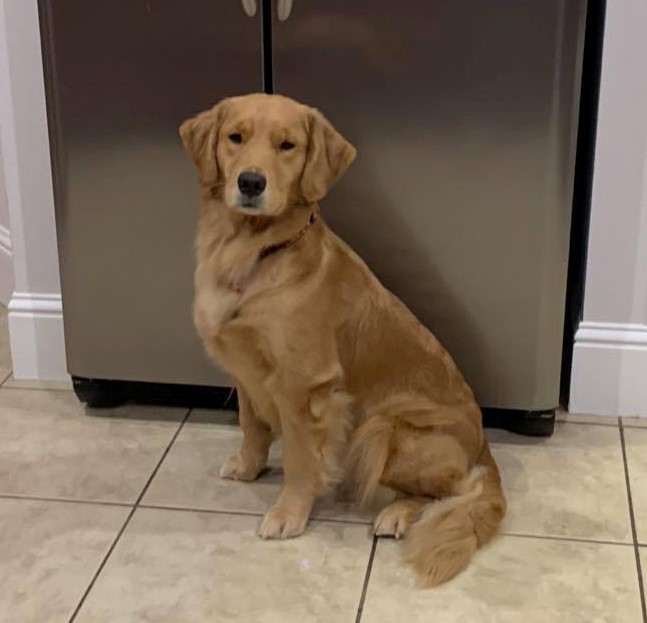
In Florida 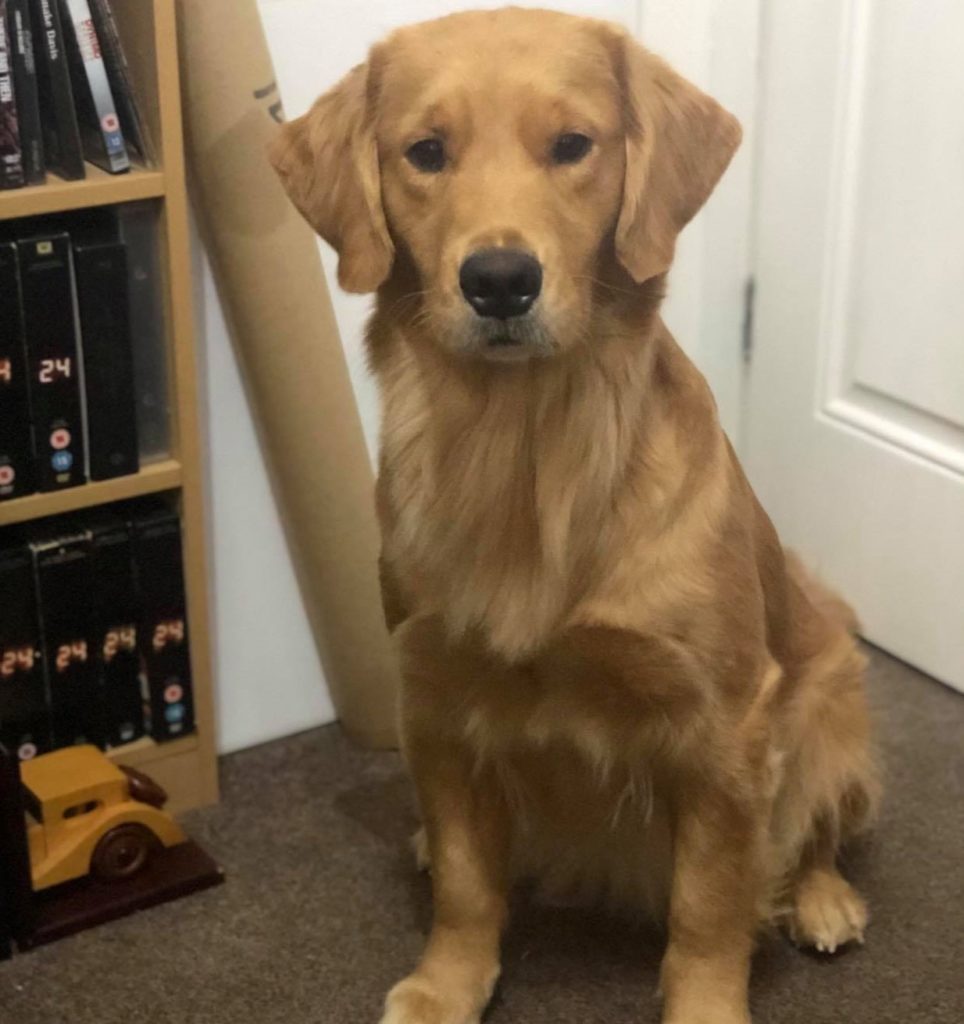
In the UK
Now that you’ve got this, you can prepare your dog to do an activity (e.g. scavenging or finding an item etc.). It can be helpful to say their name and then follow with “sit, focus” or maybe develop this into an umbrella “listen” or “ready?” command where they do both those actions. The goal of this is to make sure that they are fully listening to you and not half-listening, or guessing/anticipating what you want them to do before you have finished. For example, they might hear “go find…” and off they go to find whatever they have guessed you want – not very useful if you wanted your carer or some water, and they bring you a ball…! Many of us with over-eager dogs (especially where food is involved) will start guessing what we want and offering all sorts of actions. As sweet and funny as this can be, it isn’t really conducive to learning or your dog actually following your instructions and understanding what is required of them. It is also putting them in an over-excited, over-stimulated state where it is then even harder for them to listen and understand. So this is really a matter of getting them to pause and listen until you are ready to progress to action.
Remember, if your dog suddenly starts getting over-excited, and starts anticipating or offering tricks etc. – RESET. This is as important as doing it in the first place as it reinforces that action doesn’t take place until they have listened (i.e. prepared). Note that the “ready?” aspect of this isn’t a cue to “get amped up” – which almost guarantees that your dog is not going to be listening – instead it is “are you ready to listen and follow the commands?” This preparation stage is as important as a leave it or wait command, it is the same reason it is recommended to have your dog wait while you put their food bowl down until you say they can have it (so you haven’t got a dog trying to munch their food before you’ve even put it down which is both chaotic and not very good for your dog’s digestion).
Action
Action is essentially the cue to “start” the activity so you can use that as a command, or anything similar e.g. “go”, “okay”, “now”, “get it”, “take it”. Many people recommend that you have one that is specific to food e.g. “take it” which can be applied to their mealtimes (as mentioned above), and then one which involves an action e.g. “start”, “now” or “go”. An example of the use of this distinction in assistance dog task-work: with Sparrow, I use “get it” for an item I want her to retrieve and “take it” for an item she can have (which is essentially food and toys). I also use “hold” for an item I want her to hold or carry, staying near me, and “take it” for an item she can go off with (usually a toy). I also use “take it” for her mealtime. You can see the pattern. Make sure the cue you use here isn’t what you would use to let them run off leash or whatever (that is a free RELEASE command, rather than an action command – see below).
Using the example of an activity being finding their food in a box or container (essentially a scavenging activity), the action command cues them to commence the activity (i.e. to start searching for their food). Anything they do before that command is given should be stopped and you should reset to prepare, to make sure you have control over the exercise. These activities are great for enrichment but they have to have parameters otherwise you end up with issues (which I talk about in the “completion” section below).
You might want to pair your action command with a hand signal to indicate what the activity is e.g. pointing at the container. This does depend on whether you want them to use their nose in the whole room to find it, or you want to make it easier and show them where it is and just require them to open it and get the food. Adjust your activity according to your dog’s confidence and experience levels – if they do these activities all the time, they’ll need less guidance and therefore you can afford to make it harder by hiding it out of sight completely and really challenging their nose; but if they are new and/or lack self-confidence you may need to help them and encourage them by making it easier if they start to disengage from the activity.
Not a release command: Some people might think that the action command is a “release” command. The reason I don’t refer to it as that is because for me, a release command is essentially a “free roam – go do whatever” cue (obviously within reason safely) whereas in a training session I’m looking for my dog to do a specific action or activity and I would be looking for them to actually stay on task with it, so it isn’t a “do whatever” cue.
Completion
Completion is uncomplicated in that it is essentially the ending to the activity. You might want to use a verbal command like “finished”, “done”, “end” or “enough”. Some also like to do a physical sign that indicates you are done e.g. a stop sign hand signal, or wiping your hands and showing them (this can be particularly useful if you have a treat obsessed dog who is always convinced you have food on you, ready to give them). The reason you want to clearly communicate the end of the activity is best illustrated with any form of activity that involves scavenging or searching for food or items. You want to be able to isolate this particular behaviour to the parameters of this training session. For them to only do it on your cue, with you observing and for them to end when you say.
Those of you with naturally food-obsessed dogs can attest that you don’t want them forever in search of food, going through bags, pockets etc. and searching the house for food, destroying items to get to it. Many a dog owner has found holes in their clothing, bags, rubbish sacks and treat bags due to their dog scavenging. It can be dangerous for your pup, especially if they consume non-food items or potentially toxic foods. You may have noticed if you have tried activities or toys like a Kong dispenser, that your dog then starts to obsess over the floor where they’ve been. This is where you want them to be able to disengage. If you want to give your dog the enrichment that activities like scavenging can provide, without all the stress of them applying the behaviours the rest of the time (and destroying your house as a result!) then an ending (completion) command is essential.
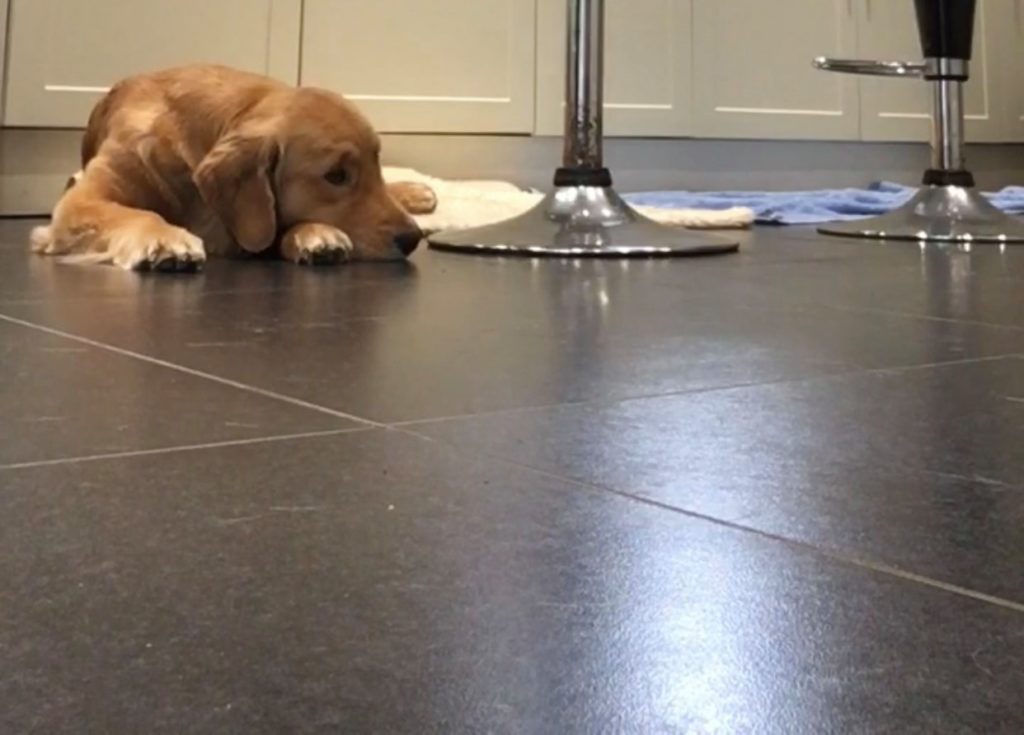
In order to do get your dog to disengage with the activity, you need to disengage with the activity AND with your dog. It doesn’t have to be for a long time, just once you have given your completion/finish command, walk slightly away, turn your back, stay still and don’t make eye contact. Avoid hovering over your dog with the aim to make sure they stop, as by doing this you are just communicating that there is a reason for them to stay interested (because you are). Equally, avoid repeating the command as it becomes essentially meaningless. Instead, lead by example – disengaging with the activity means your dog is more likely to disengage, especially when they were listening from the beginning and following your instructions. Sometimes they will return to it and essentially go through a disengage-engage-disengage-engage-disengage process as they decide and work out what to do, but once they have clearly walked away from the activity and are showing calm behaviour e.g. lying down, you can reengage with them, CALMLY.
Ending a Training Session Fully
As I referred to earlier, now might be the time to use an actual release command, depending on where you’re at in your training session. If it was a quick activity to get your dog’s nose going before you teach them something new, then you might not want to release them fully (or you’re back at square one!) Mid training session, you might want to use your preparation command or just a briefly held down-stay while you reset your environment or refresh your brain on what you want to work on (as well as giving your dog a physical pause). If your activity has been very challenging and tiring for them, it isn’t advisable to carry on with further training immediately after – especially if they’re not used to it. Remember you want to set them up to succeed. If you do want to just calm them down or make sure they’ve practised a couple of their tricks in their repertoire then do those at the end, reward and then release your dog. You can always come back to training later in the day – shorter sessions are better and more productive.
I use an actual release command (“break”) at the very end of a training session, to basically say “off you go!” Preferably at this point I want her to disengage with me (so again, I will disengage with her for a short while until she is calm and not in my face excessively). That can really help for dogs who struggle to have an off-switch or for those who are food obsessed and get fixated on you (or your pocket!) once you become a source of treats, even briefly. It can be annoying and is also not good for either of you as your dog needs to be able to be independent and respect your personal space. This also applies to you – you need to let your dog have some time to themselves after training. Training sessions can be tiring, mentally and physically, and in the same way we need a recovery period after a tough lesson or an exercise session, our dogs do too.
Remember: preparation (calmly listen, get ready), action (start) and completion (end). And enjoy!
